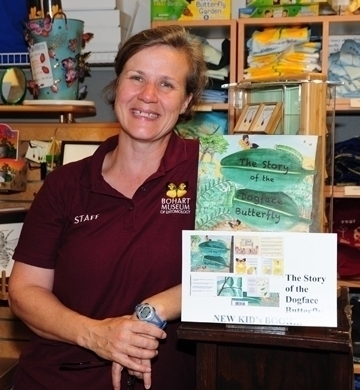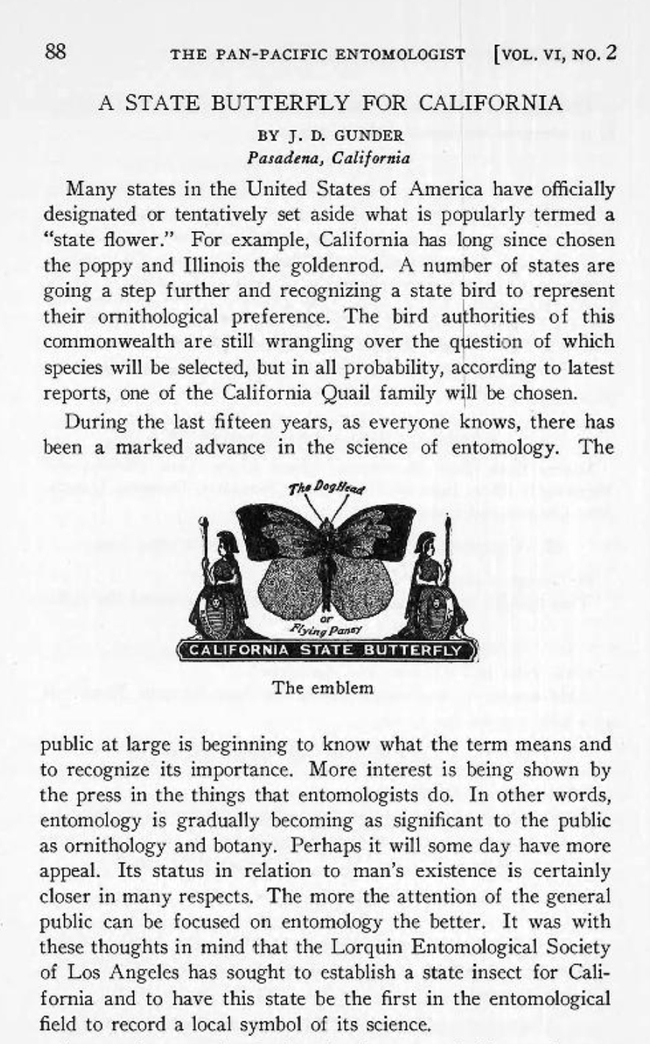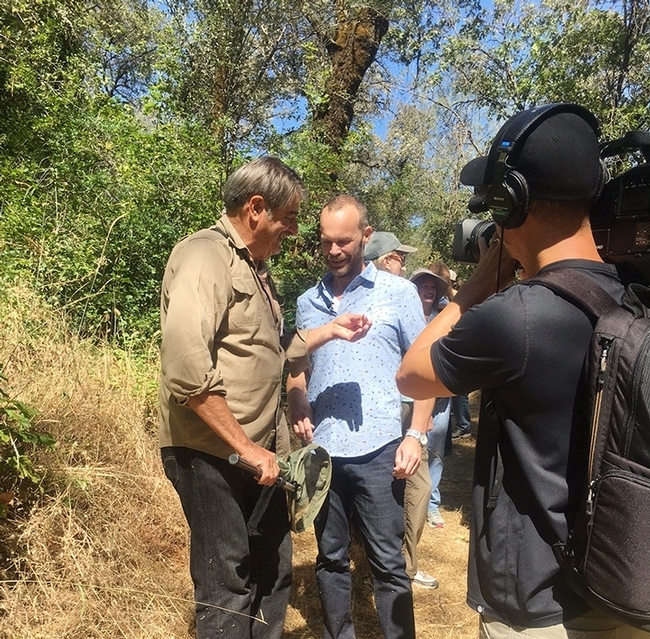
But they can't.
So scientists and butterfly enthusiasts will.
The history is intriguing. The State Legislature designated the colorful butterfly, Zerene eurydice, as the state insect 50 years ago, and Gov. Ronald Reagan signed it into law on July 28, 1972.
Found only in California, the rarely seen butterfly is also known as (1) "the flying pansy," referring to the male's spectacular black and yellow coloring, and (2) as a "dog head" butterfly (the markings on the male resemble a silhouette of a dog's head). The female is mostly solid yellow.
The butterfly's major breeding ground is in Auburn in the Shutamul Bear River Preserve maintained by the Placer Land Trust (PLT). The butterfly is there because its larval host plant--false indigo (Amorpha californica)--grows well there. "The dogface butterfly has a range from San Diego County to Sonoma County and is usually found in mountain and foothill locations," according to an article on the PLT website. (Watch a virtual tour at https://youtu.be/kJUk1AKGtKs)
Meanwhile, the folks at the Bohart Museum of Entomology, including director Lynn Kimsey, museum scientist Fran Keller and Bohart associate Greg Karofelas (he shares his expertise as a docent leading tours and delivering presentations for the Pacific Land Trust), hope to connect with the fourth grade students of Betty Harding and Shirley Klein in the Dailey Elementary School, Fresno, who advocated it as the state insect. The teachers and students enlisted the help of State Assemblyman Kenneth L. Maddy, who authored AB 1834. "His bill was read for the first time on March 15, 1972 and referred to the Assembly Committee on Government Organization, according to a state website.
"On May 25, 1972, with a committee vote of 6-2, Mr. Maddy failed to garner the needed eight votes to recommend the legislation to a floor vote. It wasn't clear why two members voted against the bill, but a bill to designate an official state fossil also gone down to defeat earlier in the day.
"The Fresno Bee wrote, 'Dog-Faced Butterfly Has Wings Clipped.'
"Assemblyman Maddy vowed to fight on and promised a better result when the full committee was present in the next week.

"A month later, on July 20, the Senate voted 29-0 to approve AB 1834.
"On July 28, 1972, Governor Ronald Reagan signed Assembly Bill No. 1834 designating the California dog-face butterfly the official State Insect of California." (Read more on how the butterfly became the state insect under the Ronald Reagan administration.)
The fourth graders, who were then about 10 or 11 years old, are now in their early 60s. Where are they? The folks at the Bohart Museum want to know--they'd love some first-hand information on how the project originated and why. Perhaps they could be involved in a 50th year celebration!
In 2013, Fran Keller, a UC Davis doctoral alumnus and now a professor at Folsom Lake College, published a 35-page children's book, The Story of the Dogface Butterfly that includes includes photos by Kareofelas and Keller and illustrations by then UC Davis student Laine Bauer. They earlier created a poster. Both the book and the poster are available for sale in the online gift shop at the Bohart Museum (The Bohart, located in Room 1124 of the Academic Surge Building on the UC Davis campus, is temporarily closed to the public due to the COVID pandemic and campus policies.) Net proceeds benefit the insect museum's education, outreach and research programs.

Kareofelas has assisted with news documentaries on the butterfly:
- Rob on the Road, KVIE, Public Broadcasting Service (PBS)
- Capital Public Radio, National Public Radio (NPR)
The history of how the butterfly became the state insect actually begins in the 1920s with the Lorquin Entomological Society of Los Angeles. In an October 1929 article in The Pan-Pacific Entomologist, a publication of the Pacific Coast Entomological Society, J. D. Dunder of Pasadena credits the Lorquin Entomological Society with seeking "to establish a state insect for California." Out of three choices, the group voted on the California dogface butterfly.
Dunder wrote that the butterfly is "strictly a native California butterfly" and that "thousands of specimens are used each year in entomological art work for trays, bookends, plaques, etc., so the species is already fairly well known to the pubic."
Today its image graces a first-class U.S. stamp and our California driver licenses. It's also depicted on the California State Fair monorail. The Lone Buffalo Vineyards and Winery, Auburn, memorialized it on labels of specially bottled wine, with proceeds helping conservation efforts of the Placer Land Trust to protect the butterfly. It is, indeed, a spectacular butterfly.
Now the question is, why did the fourth graders pursue the project? The butterfly is not found in Fresno. Who or what inspired them? And why?
Anyone know?
Attached Images:
